Most 6 month olds aren’t yet ready for puffs, as babies need to develop skills that usually come a little later on. When and how to introduce your little one to puffs? We’ve got you covered with our guide, including dos and don’ts.
Baby puffs are a popular snack to give babies in their first year, as they’re exploring solids. Puffs are a finger food that easily dissolves in baby’s mouth, and they come in lots of yummy flavors. And you may have heard of some baby puffs as a way to feed your little one peanut early and often. But guidelines including those from the U.S. Department of Agriculture (USDA) and American Academy of Allergy, Asthma, and Immunology (AAAAI) affirm the importance of continually feeding other allergens to babies and toddlers, along with peanut.
Ready. Set. Food! Organic Puffs are a way to keep feeding your baby peanut – and 8 other top allergens – regularly with puffs, and help set your little one up for a healthier future of food freedom.
Our puffs are also a great way to help promote diet diversity, which means feeding a variety of foods to promote a lifetime of nutritious eating. The USDA Dietary Guidelines for babies and toddlers emphasize the importance of diet diversity in building lasting healthy eating habits.
But when can baby have puffs? And how to introduce your little one to puffs? We’ve got you covered with our guide, including dos and don’ts. We’ll also explore why most 6 month olds aren’t ready for puffs.
When can my baby have puffs?
Many parents wonder. “Can my 6 month old have puffs?” Well, there isn’t a set age that all babies are ready for puffs. Instead, they must be developmentally ready. Still, most babies aren’t developmentally ready for puffs until they’re 8 months of age or older.
To be ready for puffs, your baby must sit without support, and must already be used to chewing different textures of solid foods. They are likely ready for puffs when they can use their fingers to pick up and eat foods, bring those foods to their mouth on their own, and confidently use their jaws to chew foods. If they’re eating other finger foods, they’re developing the skills they need to eat puffs – chewing and grasping are learned skills.
Baby doesn’t need to master the pincer grasp to be ready for puffs (or any other finger food). They just need to be able to grasp foods in some way. Puffs are a great way to help baby learn and practice the pincer grasp.
Before you give baby puffs, baby should also be crawling without their tummy touching the ground. What does crawling have to do with eating different textures like puffs? It helps baby build stability and body control, and assists with the development of mouth movement skills like chewing.
Most babies are ready for puffs around 8 months of age. If your little one is doing baby-led weaning, they may develop the grasping and confident chewing skills they need at an earlier age.
And since baby puffs easily dissolve when they come in contact with saliva, baby doesn’t need teeth to be ready for puffs. They just need to be a confident chewer with their jaws.
Benefits of giving baby puffs
Why give baby puffs? Here are the main benefits:
- They help baby further develop chewing skills, since they’re a new texture.
- They also help baby learn to manipulate a new type of food in their mouth.
- They help baby build on their skills of grasping and moving food to the mouth – in particular, they help baby learn the more advanced pincer grasp.
- With Ready. Set. Food! Organic Puffs, you can keep feeding your baby 9 top allergens in line with recent medical guidelines, and help set them up for a future of food freedom.
- Ready. Set. Food! Organic Puffs help you feed your little one a diverse diet that includes a variety of foods.
How to introduce puffs to baby?
Here are our top tips for feeding baby puffs:
- Choose dissolvable puffs made for babies and toddlers. Ready. Set. Food! Organic Puffs easily dissolve in your baby’s mouth, so they’re easier for baby to eat.
- Ready. Set. Food! Organic Puffs help you keep feeding your little one 9 common allergens – peanut, egg, milk, cashew, almond, walnut, sesame, soy and wheat – and promote a diverse diet. They’re the only puffs that can help you keep feeding your baby these 9 top allergens.
- Remember that puffs are a snack – they complement other foods as part of a balanced diet.
- Don't feed puffs instead of regular solids meals. Instead, serve puffs alongside fruits, veggies, and proteins at meals. Or, feed puffs as a snack in between meals, once per day.
- Along with the puffs, be sure to feed your little one a variety of nutritious solids to further promote diet diversity. Prioritize fruits and veggies in a variety of colors, and incorporate different proteins and whole grains into baby’s daily meals.
- Baby puffs are quick-dissolving when they come in contact with baby’s saliva. So, they aren’t a choking hazard. But you must still supervise baby at all times when they are eating puffs.
- Only give puffs to your child when they are sitting down.
- Let baby feed themself puffs. This helps build their grasping and food-moving skills.
- If baby tries to put too many puffs in their mouth at once, place 1-3 puffs at a time on different parts of baby’s tray or the table, so baby will pick them up one by one.
Introducing Puffs: Review of the Dos and Don’ts
The DOS
- DO wait to introduce puffs until baby is confidently chewing different textures, can grasp food, and can crawl without their belly touching the ground.
- DO keep feeding baby common allergens with Ready. Set. Food! Organic Puffs.
- DO feed puffs to baby only when they’re seated and supervised.
- DO feed baby puffs as part of a balanced diet.
The DON’TS
- DON’T feed puffs that weren’t designed for babies.
- DON’T substitute puffs for meals.
- DON’T leave baby unattended when they eat puffs.
- DON’T hand-feed puffs – instead, let baby feed themself.
- DON’T let baby have puffs when they are standing or moving.
-------------------------------
All health-related content on this website is for informational purposes only and does not create a doctor-patient relationship. Always seek the advice of your own pediatrician in connection with any questions regarding your baby’s health.
These statements have not been evaluated by the Food and Drug Administration. Products are not intended to diagnose, treat, cure or prevent any disease.
See the FDA Peanut Allergy Qualified Health Claim at the bottom of our homepage.
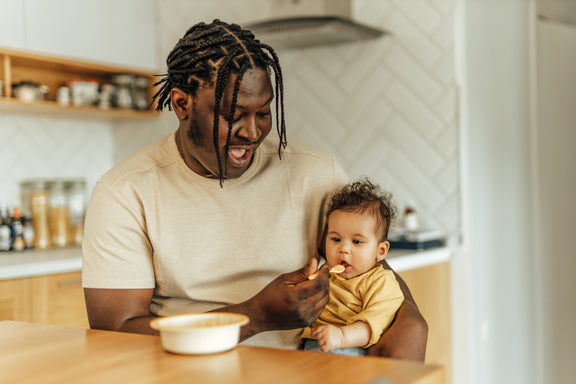
The Window Of Opportunity For Introducing Peanut: New Study Findings From the LEAP and EAT Trials
Results from the landmark LEAP and EAT studies have shown that intr...
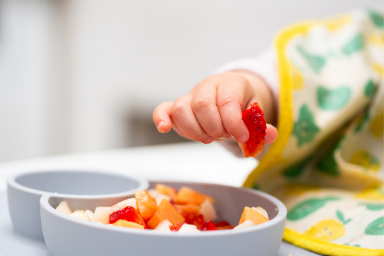
Best Finger Foods For Babies (And When To Start Finger Foods)
When to move beyond the spoon and start baby's journey with finger ...
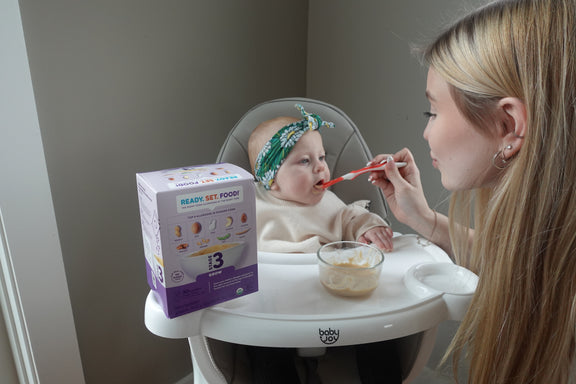
6 Reasons Why You Should Introduce Allergens
Landmark studies and medical guidelines recommend that you introduc...
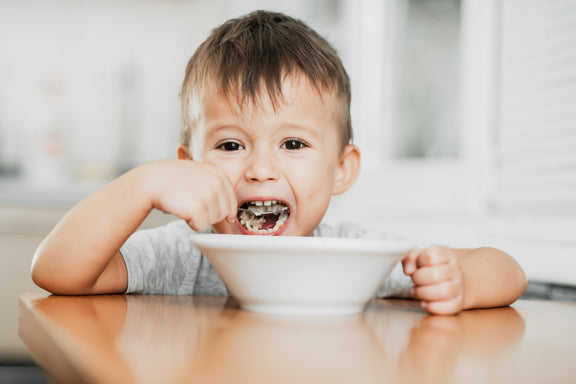
7 Ways to Feed Your Toddler More Iron
Iron is an essential mineral for your toddler’s brain health and ov...
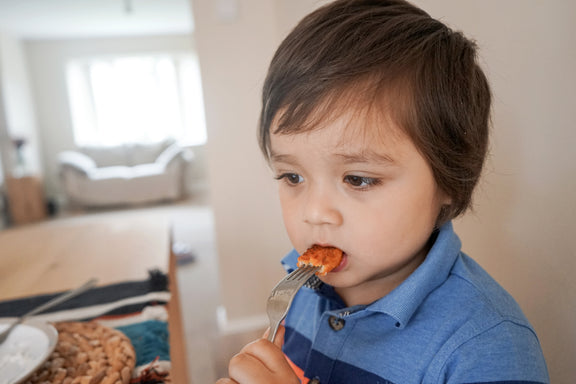
How To Know If My Toddler Is Getting Enough Protein?
Protein supports your toddler’s growth, helps build strong bones an...
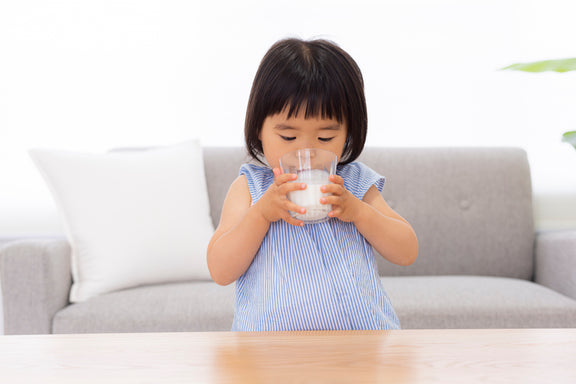
How Much Milk Should Your Toddler Drink?
How much milk should your toddler drink in a day? Find out the reco...
All health-related content on this website is for informational purposes only and does not create a doctor-patient relationship. Always seek the advice of your own pediatrician in connection with any questions regarding your baby’s health.
These statements have not been evaluated by the Food and Drug Administration. Products are not intended to diagnose, treat, cure or prevent any disease. If your infant has severe eczema, check with your infant’s healthcare provider before feeding foods containing ground peanuts.







